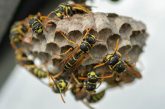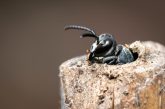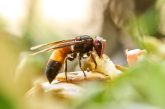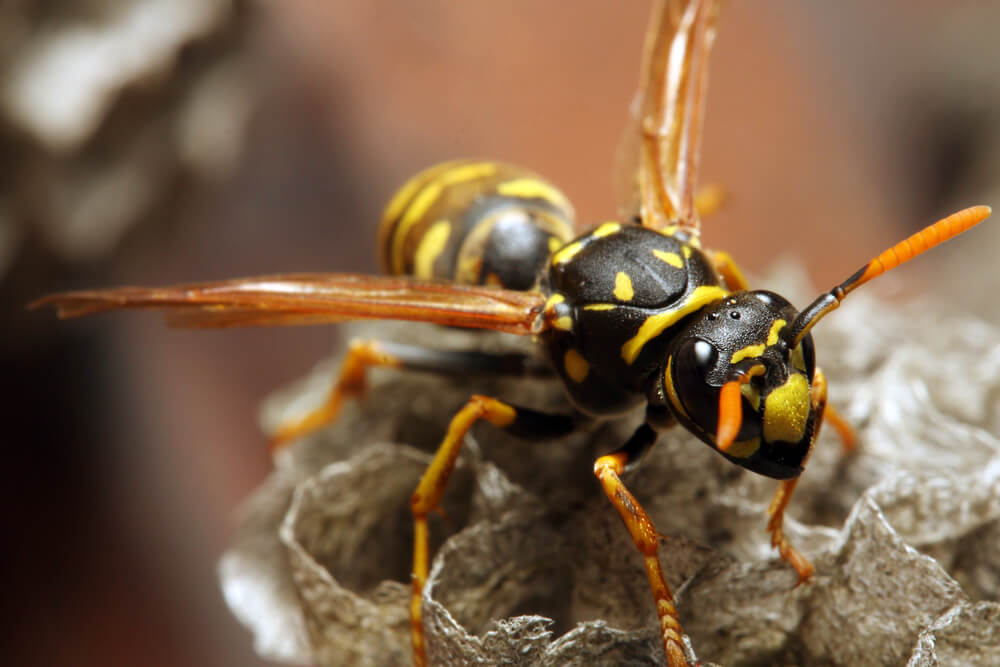
Yellow jacket wasps play a vital role in our ecosystem but are often misunderstood. This guide explores their identification, behavior, and management, offering insights into their life cycle and nests. It helps distinguish yellow jackets from hornets and paper wasps and emphasizes their importance in pest control. The guide provides practical advice on managing nests and treating stings, making it essential for understanding these industrious creatures.
Understanding the Yellow Jacket Wasp
The yellow jacket wasp is a fascinating insect that often garners attention due to its distinctive appearance and behavior. As part of the Vespidae family, yellow jackets are among the most common wasps encountered, especially during late summer and early fall when they become more aggressive in their search for food.
Identifying this particular wasp species can be straightforward if you know what to look for. Yellow jackets are typically characterized by their black and yellow striped bodies, which can sometimes be confused with bees. However, unlike bees, yellow jackets have a more slender waist and lack the fuzzy body that bees possess. Their wings are generally shorter than their body length and rest flat against their backs when not in flight.
Understanding the behavior of yellow jackets is crucial for both safety and curiosity. These wasps are social insects living in colonies that can number in the thousands. They construct nests from chewed wood fibers mixed with saliva, creating papery structures often found underground or in protected cavities like wall voids or tree hollows.
While they play a beneficial role in ecosystems by controlling pest populations, yellow jackets can pose threats due to their defensive nature when disturbed. Learning about these common wasps helps us coexist safely while appreciating their place within our environment.
The Life Cycle and Behavior of Yellow Jacket Wasps
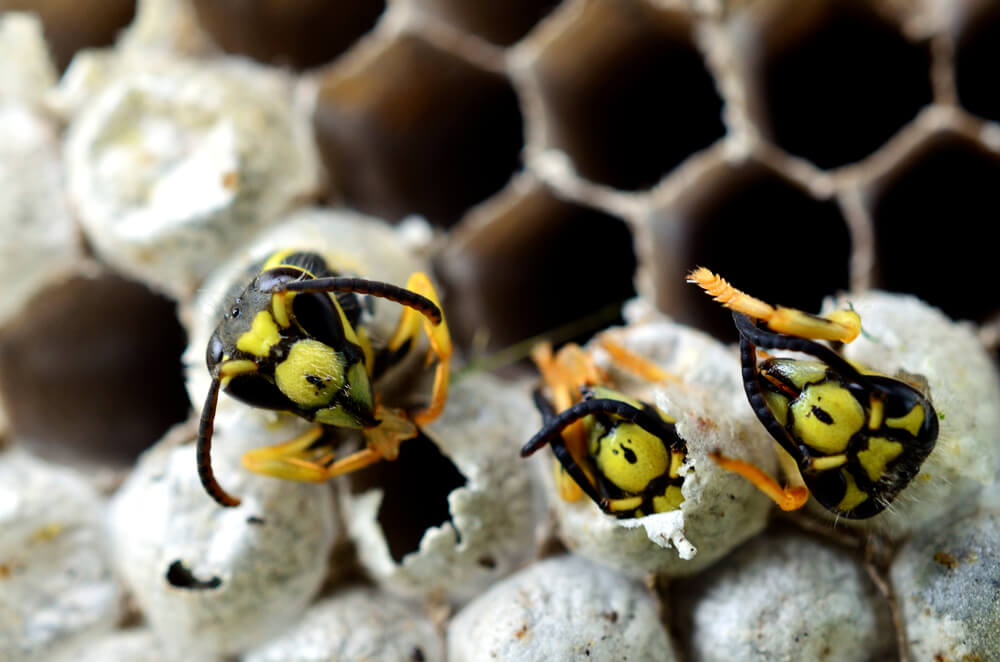
Yellow jacket wasps are fascinating social insects with complex life cycles and behaviors that play a crucial role in their ecosystem. Understanding the wasp life cycle begins with the emergence of queens from hibernation in early spring. These queens, having survived the winter, seek out suitable locations to establish new colonies. The nesting habits of yellow jackets often involve building nests underground or in protected cavities, using chewed wood fibers mixed with saliva to create paper-like structures.
Once a nest is established, the queen lays eggs that develop into worker wasps. These workers take on various roles within the colony, such as foraging for food, expanding and maintaining the nest, and caring for larvae. Yellow jacket behavior is notably aggressive when defending their nests or food sources, which they actively scavenge from garbage or prey upon other insects.
As summer progresses into late fall, new queens and males are produced to continue the cycle. After mating, these future queens will seek shelter to overwinter and start new colonies in the following year. Understanding these aspects of yellow jacket behavior not only helps us appreciate their ecological importance but also aids in managing any potential conflicts between humans and these industrious insects.
Differentiating Between Yellow Jackets and Other Wasps
When it comes to identifying stinging insects, understanding the differences between yellow jackets and other types of wasps can help you manage encounters with these creatures more effectively. Yellow jackets are often confused with hornets and paper wasps due to their similar appearance, but several key characteristics set them apart.
Yellow jackets are typically smaller and stockier than other wasps. They have distinct black and yellow markings on their bodies, which can sometimes lead people to mistake them for bees. However, unlike bees, yellow jackets have a smooth body without the fuzz that bees possess. One of the most notable features of yellow jackets is their aggressive nature; they are known for being territorial and will defend their nests vigorously.
In contrast, hornets tend to be larger than yellow jackets and have a more robust build. Hornets usually display black and white or brownish coloring rather than the bright yellow seen in yellow jackets. Their nests are often found high up in trees or under eaves, away from ground level where yellow jacket nests typically reside.
Paper wasps also differ from yellow jackets in both appearance and behavior. These wasps have longer bodies with slender waists and legs that dangle when they fly. Paper wasps are generally less aggressive compared to yellow jackets and build open-nest structures resembling an umbrella shape under eaves or porch ceilings.
Understanding these differences not only aids in proper identification but also helps determine the best approach for managing interactions with these insects safely. Whether dealing with hornets vs yellow jackets or paper wasps vs yellow jackets, recognizing each species’ unique traits is crucial for ensuring personal safety while coexisting peacefully with nature’s many inhabitants.
The Role of Yellow Jackets in the Ecosystem
Yellow jackets, often misunderstood and feared for their aggressive behavior, play a crucial role in maintaining the balance of our ecosystems. As part of the wasp family, these insects are vital players in pest control. The ecological role of wasps, particularly yellow jackets, is significant due to their predatory nature. They help manage populations of other insects that can become pests if left unchecked.
One of the primary contributions of yellow jackets is their ability to control pest populations. They feed on a variety of insects such as caterpillars, flies, and beetle larvae. By preying on these species, yellow jackets naturally reduce the need for chemical pesticides and contribute to healthier crop yields.
Moreover, the importance of yellow jackets in nature extends beyond pest control. They also serve as pollinators while searching for nectar to feed themselves and their colonies. Though they are not as efficient as bees in this role, their contribution is nonetheless valuable in supporting plant reproduction and biodiversity.
In essence, while yellow jackets might be seen as nuisances during outdoor activities or picnics, understanding their ecological significance highlights why they deserve respect and protection within our natural world. Balancing human interaction with these creatures ensures that we continue to benefit from the essential services they provide within ecosystems.
How to Manage and Control Yellow Jacket Nests Safely
When dealing with yellow jacket nests, safety and caution should always be the top priorities. Safely removing a wasp nest requires a strategic approach to minimize the risk of stings and ensure effective pest control. One of the first steps is to identify the location and size of the nest, which can often be found in wall cavities, attics, or underground burrows.
Before attempting any removal, it’s important to consider professional pest control methods for yellow jackets. Experts have specialized equipment and protective gear that allow them to handle nests efficiently without causing harm. However, if you decide to tackle this task yourself, ensure you wear protective clothing that covers your entire body and face.
Choosing the right time is crucial; early morning or late evening are ideal since yellow jackets are less active during these periods. Use insecticide sprays specifically designed for wasps from a safe distance, following all label instructions carefully.
Preventing yellow jacket stings involves taking proactive measures around your home. Seal potential entry points in walls or roofs and maintain clean outdoor spaces free from food residues that attract these pests. By combining prevention strategies with cautious removal techniques, you can manage yellow jacket nests effectively while prioritizing safety for yourself and others nearby.
Treating Wasp Stings (First Aid and When to Seek Help)
Wasp stings can be an unpleasant and painful experience, but knowing the proper first aid treatment can help manage the situation effectively. Immediate attention is crucial to alleviate symptoms and prevent complications. For most people, a wasp sting results in temporary pain, swelling, and redness at the site of the sting. The first step in wasp sting first aid treatment is to clean the area with soap and water to reduce the risk of infection. Applying a cold pack or ice wrapped in a cloth can help minimize swelling and numb the pain.
Over-the-counter pain relievers such as ibuprofen or acetaminophen can be taken to manage discomfort, while antihistamines may help reduce itching and swelling. It’s important not to scratch the affected area as this could lead to infection.
However, it’s essential to recognize signs of allergic reactions to stings, which may require immediate medical attention. Symptoms such as difficulty breathing, swelling of the face or throat, rapid heartbeat, dizziness, or hives indicate a severe allergic reaction known as anaphylaxis. In such cases, it is vital to seek emergency medical assistance promptly.
While most wasp stings resolve without complications with appropriate first aid measures, individuals who have experienced severe allergic reactions in the past should carry an epinephrine auto-injector as prescribed by their healthcare provider for emergency use.
In summary, understanding how to administer effective first aid for wasp stings and recognizing when medical attention for insect bites is necessary are key components in managing these incidents safely.

